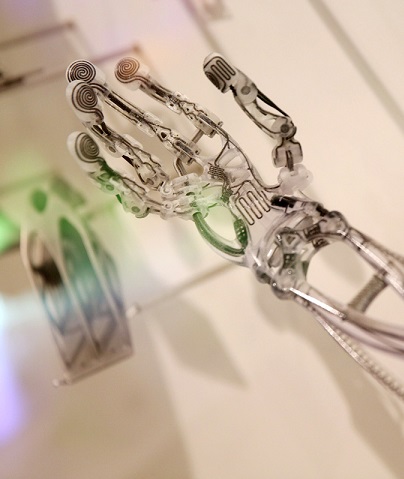Printed plastic prosthetic is a peek of new age
 An exhibition in London has seen a glimpse of either the future of prosthetics – or the first stages of a cut-price, plastic Terminator.
An exhibition in London has seen a glimpse of either the future of prosthetics – or the first stages of a cut-price, plastic Terminator.
One of the highlights of last week’s London Science Museum 3D Printing Exhibition was a beautiful and mildly concerning robotic arm – printed in clear plastic to show the astounding level of design precision available from new methods of additive manufacture.
The arm featured a solid structural design, mobile articulated joints, and even embedded spiral-shaped metal touch sensors – all of which were produced in a single process from a single machine.
“3D printing gives us the freedom to make complex, optimised shapes, and our research aim is focused on printing-in electrical, optical or even biological functions,” Richard Hague, director of the Additive Manufacturing and 3D Printing Research Group at the University of Nottingham.
“It's a mock-up but it shows circuits that sense temperature, feel objects and control the arm's movement.”
The work has real-world uses already, with a measurable reduction reported in the price of many prosthetics since additive manufacture has been employed in the process. Specifically in the application of prosthetics, 3D printing brings one of its many unique benefits. Patients can now have extremely high-resolution scans of their bodies taken and equally high resolution prosthetics created from them – to form the perfect fit in record time.
It also democratise inventions, with projects like the open-source 3D printed RoboHand, which is available for anyone can make or modify for free.








 Print
Print